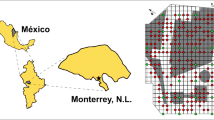Abstract
Microbial whole-cell sensor has been widely used to assess bioavailability and risk of toxic elements, but their environmental use is still limited due to the presence of other interfering pollutants and the nonspecific binding in cells, which leads to inaccurate results. Here, we proposed a strategy combining Escherichia coli sensor set with binary regression models for the specific detection of bioavailable cadmium (Cd), lead (Pb), and arsenic (As) in a co-polluted environment. Initial tests suggested that the sensor set respectively termed pcadCluc, pzntRluc, and parsRluc could be classified into two groups according to their specific response to Cd, Pb, and As: group 1 (pcadCluc and pzntRluc) induced by a Cd-Pb mix and group 2 (parsRluc) induced by a Cd-As mix. Based on the variance in responses of each sensor to mixtures of target elements, three binary linear equations for two sensor groups were set up to calculate the individual concentrations in the mixture solutions. This method was then used to quantify the bioavailable Cd, Pb, and As in soils from a co-polluted mining region and to compare the results with other methods. Results showed that the conventional single target sensor method overestimated the bioavailability of each element, while sensor set was credible for accurate bioavailable Cd, Pb, and As quantification and comparable with the results from inductively coupled plasma mass spectrometry (ICP-MS) analysis. Our method can potentially be extended to cover the specific detection of other bioavailable toxic elements in different environmental settings.

Illustration of whole-cell sensor set for bioavailable cadmium, lead, and arsenic detection



Similar content being viewed by others
References
Semple KT, Doick KJ, Jones KC, Burauel P, Craven A, Harms H (2004) Defining bioavailability and bioaccessibility of contaminated soil and sediment is complicated. Environ Sci Technol 38:228a–231a
Kahru A, Ivask A, Kasemets K, Pollumaa L, Kurvet I, Francois M, Dubourguier HC (2005) Biotests and biosensors in ecotoxicological risk assessment of field soils polluted with zinc, lead, and cadmium. Environ Toxicol Chem 24:2973–2982
Peltola P, Ivask A, Astrom M, Virta M (2005) Lead and Cu in contaminated urban soils: extraction with chemical reagents and bioluminescent bacteria and yeast. Sci Total Environ 350:194–203
Ivask A, Virta M, Kahru A (2002) Construction and use of specific luminescent recombinant bacterial sensors for the assessment of bioavailable fraction of cadmium, zinc, mercury and chromium in the soil. Soil Biol Biochem 34:1439–1447
Stocker J, Balluch D, Gsell M, Harms H, Feliciano J, Daunert S, Malik KA, Van der Meer JR (2003) Development of a set of simple bacterial biosensors for quantitative and rapid measurements of arsenite and arsenate in potable water. Environ Sci Technol 37:4743–4750
Tauriainen S, Karp H, Chang W, Virta M (1997) Recombinant luminescent bacteria for measuring bioavailable arsenite and antimonite. Appl Environ Microbiol 63:4456–4461
Ivask A, Rolova T, Kahru A (2009) A suite of recombinant luminescent bacterial strains for the quantification of bioavailable heavy metals and toxicity testing. BMC Biotechnol 9(1):41
Hou QH, Ma AZ, Li Y, Zhuang XL, Bai ZH, Zhang XK, Zhuang GQ (2014) Assessing the effect of phosphate and silicate on Cd bioavailability in soil using an Escherichia coli cadAp::luc-based whole-cell sensor. Environ Sci Process Impacts 16:890–896
Hou QH, Ma AZ, Zhuang XL, Bai ZH, Zhuang GQ (2004) The impacts of long-term different fertilization regimes on the bioavailability of arsenic in soil: integrating chemical approach with Escherichia coli arsRp::luc-based biosensor. Appl Microbiol Biotechnol 98:6137–6146
Ivask A, Francois M, Kahru A, Dubourguier HC, Virta M, Douay F (2004) Recombinant luminescent bacterial sensors for the measurement of bioavailability of cadmium and lead in soils polluted by metal smelters. Chemosphere 55:147–156
Liao VH, Chien MT, Tseng YY, Ou KL (2006) Assessment of heavy metal bioavailability in contaminated sediments and soils using green fluorescent protein-based bacterial biosensors. Environ Pollut 142:17–23
Harvey CF, Swartz CH, Badruzzaman ABM, Keon-Blute N, Yu W, Ali MA, Jay J, Beckie R, Niedan V, Brabander D, Oates PM, Ashfaque KN, Islam S, Hemond HF, Ahmed MF (2002) Arsenic mobility and groundwater extraction in Bangladesh. Science 298:1602–1606
Campbell CD, Hird M, Lumsdon DG, Meeussen JCL (2000) The effect of EDTA and fulvic acid on Cd, Zn, and Cu toxicity to a bioluminescent construct (pUCD607) of Escherichia coli. Chemosphere 40:319–325
Turpeinen R, Salminen J, Kairesalo T (2000) Mobility and bioavailability of lead in contaminated boreal forest soil. Environ Sci Technol 34:5152–5156
Acknowledgments
This work is financially supported by the “Knowledge Innovation” Program of Chinese Academy of Sciences (KSCX2-YW-JS401), the National Key Technology R&D Program of China (2012BAJ24B01), the Major Science and Technology Program for Water Pollution Control and Treatment (2012ZX07209-003), and the Key Research Program of Chinese Academy of Sciences (KZZD-EW-11-1/3).
Conflict of interest
The authors declare that they have no competing interests.
Author information
Authors and Affiliations
Corresponding authors
Electronic supplementary material
Below is the link to the electronic supplementary material.
ESM 1
(PDF 2466 kb)
Rights and permissions
About this article
Cite this article
Hou, Q., Ma, A., Wang, T. et al. Detection of bioavailable cadmium, lead, and arsenic in polluted soil by tailored multiple Escherichia coli whole-cell sensor set. Anal Bioanal Chem 407, 6865–6871 (2015). https://doi.org/10.1007/s00216-015-8830-z
Received:
Revised:
Accepted:
Published:
Issue Date:
DOI: https://doi.org/10.1007/s00216-015-8830-z




